Islanders seem to voice the complaint nearly as often as they grumble about summer traffic backups at the blinker light and spiking prices at the gas pump:
You can’t find a primary care doctor on the Island.
That would track a national trend that the country is suffering a shortage of primary care doctors and probably will for the next decade. It’s also consistent with recent history on the Vineyard, during which many doctors haven’t taken on new patients, leaving many with the only option of walk-in clinics or the hospital emergency room.
Except some say that perception may no longer match the reality.
A number of primary care physicians at the hospital and in private practice on the Island say they are in fact accepting new patients. And not coincidentally, visits to the hospital ER have declined for the first time in a decade. But others say that wait lists and inaccessibility still define the primary care landscape on the Island.
Even data offers a contradictory picture: Dukes County has been designated a health professional shortage area, but a recent survey showed that half of family care doctors and all pediatricians are taking new patients.
A recent series of interviews with Island doctors and health care professionals showed that there is no one school of thought about access to primary care, and that the very subject of Island health care opens up a complicated web of issues. Some are national in scope: lack of primary care doctors, a system that rewards procedures more than prevention and access to health care insurance. Others are unique to the Vineyard and Massachusetts: the demands of on-call obligations for hospital doctors, the difficulty of bringing young doctors to the Island, a distinctive and challenging patient population, and a state health care mandate thought to be ahead of the curve.
But it all begins with the question of access. And there is little question that primary care physicians play a critical role in an effective health care system.
At the Martha’s Vineyard Hospital, where another physician was added last year, the primary care staff now includes 11 doctors, said Timothy Walsh, hospital president and chief executive officer.
“Right now, [four] practices are pretty much open [for new patients],” Mr. Walsh said. “People can call in and get on a list to have that [person] be their physician. And that is kind of new. They have been closed for a while.”
Dr. Gerald Yukevich and Dr. Michael Jacobs, who operate Vineyard Medical Services, a Vineyard Haven walk-in clinic, in addition to their primary care practices, said they are taking new patients and have added two new nurse practitioners.
At her Oak Bluffs office, Sarah Kuh, the director of Vineyard Health Care Access Program, helps people navigate the sometimes complicated maze of bureaucracy that can be an impediment to health insurance, and helps people find primary care doctors. She, too, said the trend is improving.
“It’s actually not that bad,” Ms. Kuh said. “There are a couple of places where we know that they always take new patients . . . It depends on who’s new at the hospital because the newer primary care physicians tend to be able to take new patients and then we let people know they can try to reach that physician’s office. We tell people to feel free to call around, get on a waiting list,” she said. “Keep calling and checking.”
For 35 years, pediatrician Dr. Michael Goldfein has tended earaches and given booster shots to Island children. At his office Wednesday, where Legos and photographs of baby animals decorate the waiting room, the doctor said that though it’s not always easy to practice on the Island, there is ample pediatric care.
“I can’t speak for the adults, but pediatric primary care, yes indeed . . . there is ample access,” Dr. Goldfein said. “Many of the family practitioners see children, and there is another pediatrician here as well, so there’s no reason for any child not to have access to health care here on the Vineyard. Plus there’s pretty much universal health insurance available for children and there’s really no reason for any child not to have health insurance provide for their care.”
But Cynthia Mitchell, the executive director of Island Health Care, a primary and urgent care center in Edgartown, had another view. When it comes to the idea that it’s hard to find a doctor on the Island, “I would say that it is the perception, and it is the reality,” Mrs. Mitchell said. “It was one of the reasons that we established the clinic, to improve the shortage of primary care doctors.”
Island Health Care is a rural health clinic, the only one in the state and one of about 4,000 across the country.
And while the new state health care law has made health care available for the uninsured, Mrs. Mitchell said problems still exist. “I’m used to thinking of lack of access to primary care as being a matter of insurance and that has changed so radically — in fact it has exacerbated the shortage problem because now more people have the ability with insurance to have a doctor,” she said.
Change from a Decade Ago
When Mr. Walsh arrived on the Vineyard in 2000, there were only about four primary care physicians on the Island. He remembers a familiar scene each morning at the ferry dock: elderly couples waiting to head off-Island to see their primary care physicians.
“Well, this is crazy,” he recalled thinking. “Trying to run a hospital and everyone is going off-Island to see their doctors. So we went on a mission to recruit physicians.”
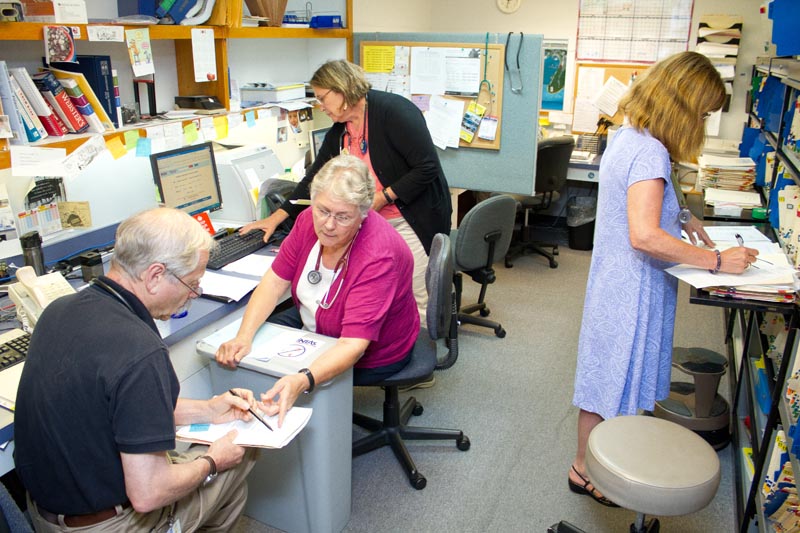
There were bumps along the way. The hospital first tried subsidizing physicians starting their own practices, but abandoned that in favor of bringing the physicians on as hospital employees.
The hospital’s primary care staff now includes six primary practices, three internists and two pediatricians, who all participate in the hospital’s on-call rotation system, which avoids the more costly model that places non-emergency room doctors in the hospital around the clock, seven days a week.
But it adds to the difficulty of an already challenging task of recruitment. “Primary care doctors are probably the hardest workers in the medical profession, and the pay is not terrific,” said Mr. Walsh. “It’s not commensurate with the amount of work they have to do.”
So as he recruited, he gave candidates the choice of starting as hospital employees and moving into private practice, and vice versa.
“My goal was to get physicians on the Island,” he said. “And that worked. It took us a long time. Even with the employee model, though, it was difficult.”
Dr. Yukevich said he can see why it would be hard for young doctors to move to the Island. “The thought of embarking on a real estate investment when you’re fresh out of medical school, possibly with some student loans, it absolutely is preposterous, so the housing issue is difficult. The Island is difficult,” he said.
One apparent indicator of improved access to primary care is emergency room volume, which has declined in the past year by about five percent, according to Mr. Walsh — for the first time in a decade. While some of that may be because of higher insurance co-payments for emergency room visits (from $25 a few years ago to as much as $100 today), primary care physicians are part of a system that catches health problems earlier, and thus helps avert a more expensive trip to the ER, hospital leaders say.
“I think it’s part of that drop,” said Dr. Jeffrey Zack, head of emergency medicine at the hospital.
On Tuesday this week, with two people on staff for most of the time, Vineyard Medical Services saw 55 patients at the walk-in clinic. Dr. Yukevich said patients are a mix of year-round residents, some of whom use the clinic for primary care, as well as a more itinerant population of summer residents and tourists from all over the world who need medications verified or checked on or who have health problems when they are traveling. He spends seven to eight minutes with a patient for a tick bite, and perhaps an hour with someone who has chest pains or an abdominal problem.
Dr. Yukevich was trained as an internist and worked for years in emergency rooms. “So I’ve been in a setting where I saw emergency departments used as primary care in lots of different places because people couldn’t find access to doctors, and that certainly was the case at the Martha’s Vineyard Hospital for a significant amount of time that I worked there, for one reason or another,” he said.
Having a walk-in clinic helps relieve the burden on other Island resources like the emergency room, he said. This summer, the clinic expanded its hours to 6 p.m., and holds hours on Saturday mornings, which “helped probably to relieve the burden on the emergency room,” Dr. Yukevich said. “I think we’ve been averaging 12 to 15 patients on Saturday morning and I think that probably takes some of the pressure off other practitioners.”
Some patients with physicians at the hospital have difficulty getting an appointment with their regular doctor and come to the clinic. “And that’s a function that we’re happy to serve because we kind of feel like everybody’s got to pitch in to do the job,” Dr. Yukevich said.
Mrs. Mitchell agreed. “A patient needs a doctor who is their main source of health information, preventive management,” she said.
Primary Care, the Front Line
Getting and keeping primary care physicians anywhere will be a continuing problem in American health care — medical students tend to gravitate to more lucrative specialties — and the Vineyard adds an additional layer or two that makes it more complicated.
“If you can get a job where you do procedures, whether that’s looking into somebody’s stomach or other places . . . then you’re going to find that your income is probably going to double, quite easily, as opposed to starting in the trenches,” said Dr. Yukevich.
But he said he finds primary care fulfilling. “It’s extremely rewarding despite the fact that you know, the phone rings a lot, I have to go out and make decisions. I’m trying to keep that balance,” he said.
Dr. Goldfein echoed the sentiment. Pediatrics is less procedure-oriented and more about preventive care, he said. Kids come not just for a check-up or to get a sore foot looked at, but also to learn about healthy habits.
“Kids are different because you do a lot of preventive [medicine],” chimed in Sandy Hill, a longtime nurse practitioner at Dr. Goldfein’s office. “Immunizations, you do a lot of anticipatory guidance about growth and development. You do teaching with adults but it’s not the same,” she said.
“And we do a lot of teaching to parents,” Dr. Goldfein added. (One lesson: limit television time before the age of two, and read to children.)
But the system is far from perfect, Dr. Goldfein conceded. “Primary care is probably the least reimbursed of all the areas of medical care. We have a payer system that’s based on procedures, not on thought. You can do a very quick procedure and get highly reimbursed for it, and you can spend half an hour or an hour with a patient and not get nearly as much reimbursement for all of that time. So the system is kind of warped in that sense.”
Primary care for children is “very important,” he said, “and a lot of people don’t see that. Fortunately the insurance companies see the value to that and all the insurance companies will pay for annual physicals for the pediatric population. Because the insurance companies are aware it’s far costlier for them if their clients don’t get good well-child care. And it becomes disease-oriented, and then they’re putting out those fires.”
Seasonal Population Shifts
One complicating factor in health care on the Vineyard is the influx of seasonal residents and an increasing demand for health care from that population. The hospital spends $800,000 alone on housing costs for seasonal staff who help handle the flow. Emergency room visits in July and August alone reach about 5,000, about a third of the ER’s yearly total, said Dr. Zack.
Seasonal visitors present a different set of challenges for primary care physicians. Many are elderly and may routinely see a half-dozen specialists at home during the rest of the year, and then visit an Island doctor who must devote an inordinate amount of time on the phone to be briefed on their conditions and treatments.
“So you have expended all that energy trying to get to know a person, and then they are gone,” said Dr. Prit Gill, who arrived last year as the hospital’s newest primary care physician. “And they arrive the next year, start all over again, but [their health] has changed.”
Dr. Goldfein said he sees some patients every summer when they come back to the Island.
“What’s interesting to me is that in the summer time we have people that visit the Island from all over the world, it sometimes amazes me that they will come here with children with very significant illnesses, so we get to see some unusual problems sometimes as a result of that.”
And though the illnesses may change — tick bites in the summer, respiratory ailments in the winter — his office keeps the same staff year-round. During the summer, they schedule fewer physicals to keep space open, and when school days roll around, check-ups start again.
Beyond Walk-in Care
Primary care physicians also face an Island population with a disproportionate number of patients with some form of mental illness.
While an average patient may require minimal oversight and usually have no trouble complying with a treatment regimen, some patients with mental illness require a level of physical, emotional and psychological support that can be overwhelming to primary care physicians, who in turn might choose to limit the number of new patients with such conditions.
“Even if you do have the training and background, it is grinding and backbreaking,” said Dr. Gill, who recently won national recognition for his humanistic treatment of patients.
Dr. Yukevich echoed the trend. “The very time-consuming issues are psychological problems,’ he said. “I find myself doing a lot of psychological judgment or counseling. Because number one, it’s extremely expensive to go to a therapist, and two, there’s a long waiting list.”
He said he helps patients along until they can see a mental health professional, “which can be very time-consuming, because you can’t just take out stitches for emotional trauma . . . it just takes a lot more time to do justice to those issues.”
A Careful Balancing Act
And while the number of primary care physicians on the Island may now be at the right balance, the departure of just one or two doctors could tip the scales back again.
“We’ll watch it and see,” Mr. Walsh said. “If it gets tight again, we’ll have to do something else.”
National estimates about the need for more primary care doctors are partially based on the Obama health care plan bringing an additional 30 million people into the health care system. Massachusetts, with its model of health care, is ahead of the curve with more than 95 per cent of the state’s residents insured, officials say.
“I firmly believe that since the Massachusetts health care law came into effect, that situation has improved vastly,” said Dr. Yukevich. “Because in a state where you’re more or less required to have health insurance of some type, suddenly I saw a lot of people coming in who had problems that had been neglected for a long time. I would say that from the point of view of our practice, it’s very gratifying to see [state health care] working extremely well.
“When I first started working here, we saw a lot of people who didn’t have doctors and now that’s unusual. It’s wonderful. To me, if people look at the way health care is delivered in Massachusetts, it is a great model.”
He continued: “I’m just in this little foxhole, I’m not seeing the big war. From what I can see, things have improved considerably through the legislation.”
But an aging baby boomer population is expected to make demands on the health care system unlike previous generations, and ensure the need for more and more primary care for many years to come.
“It already has and will continue to be a strong driver for at least the next three decades,” concluded Dr. Gill.

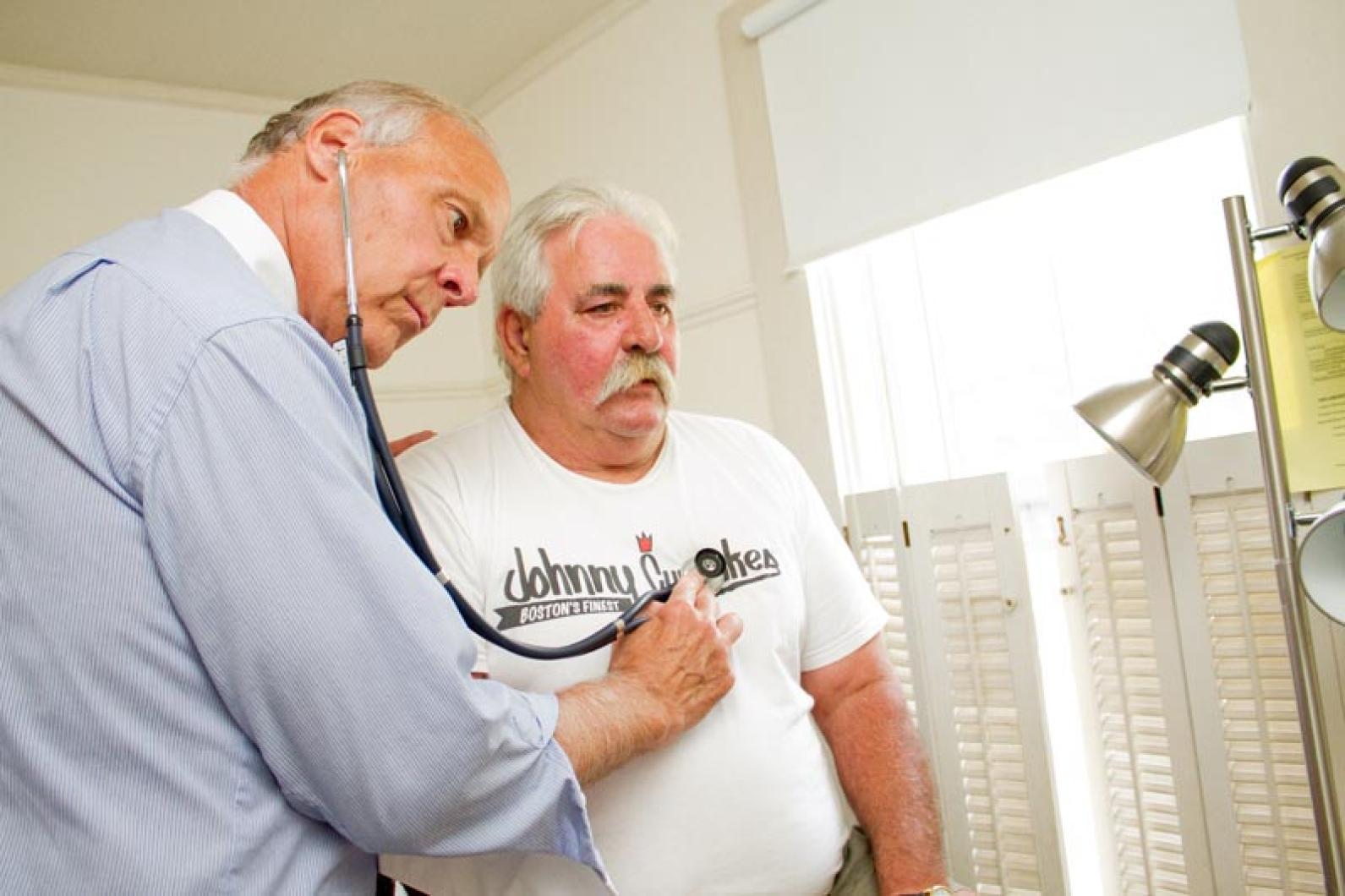
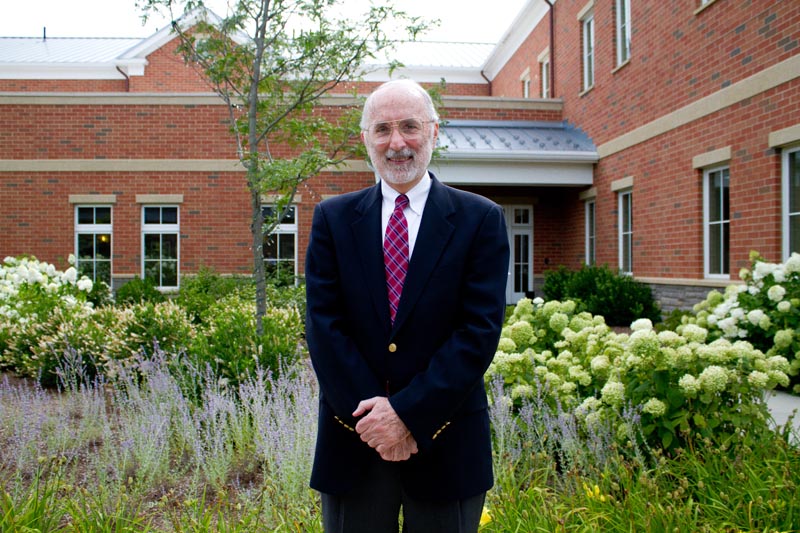
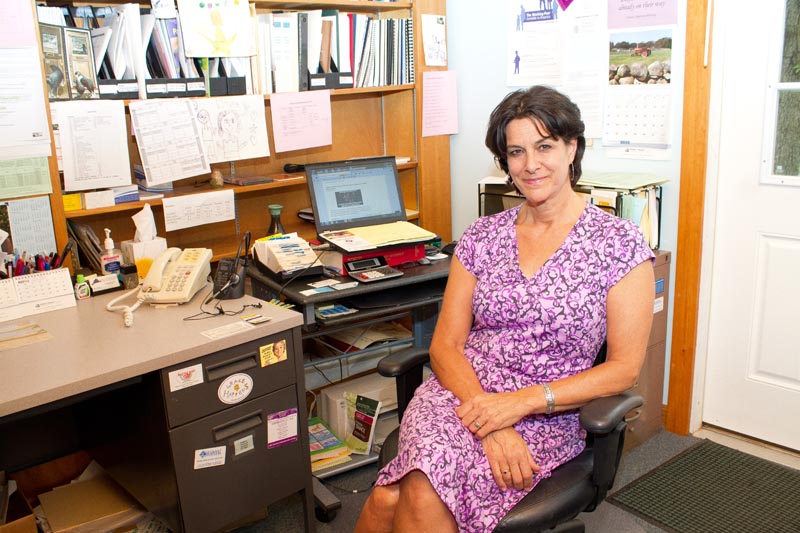
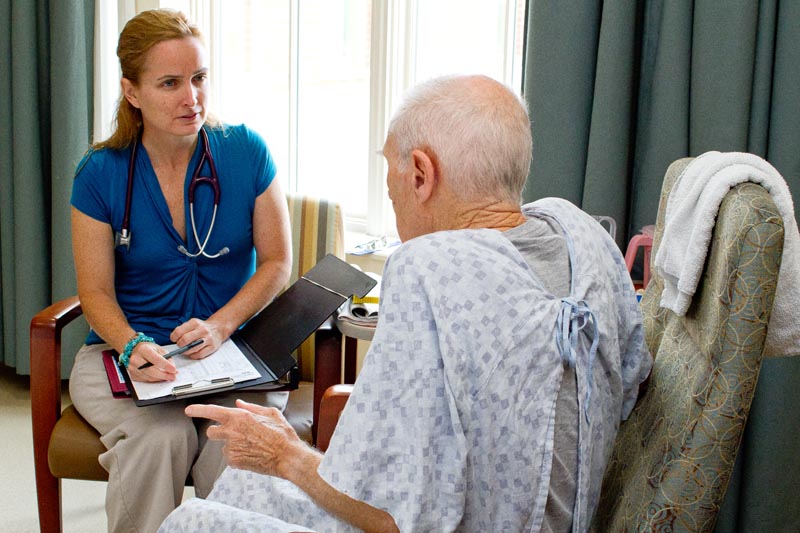
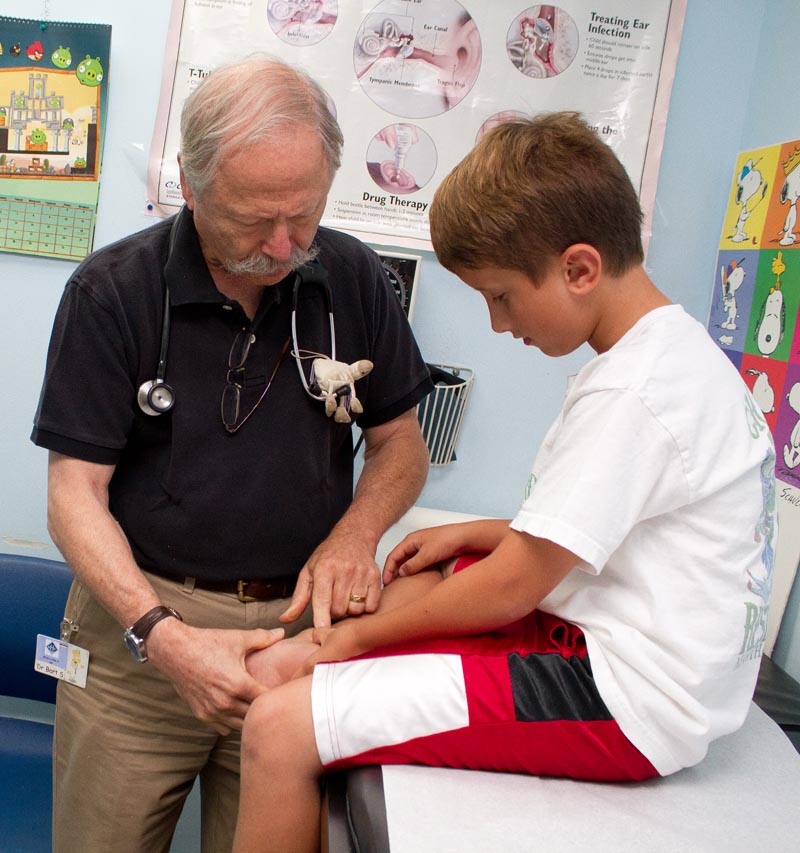
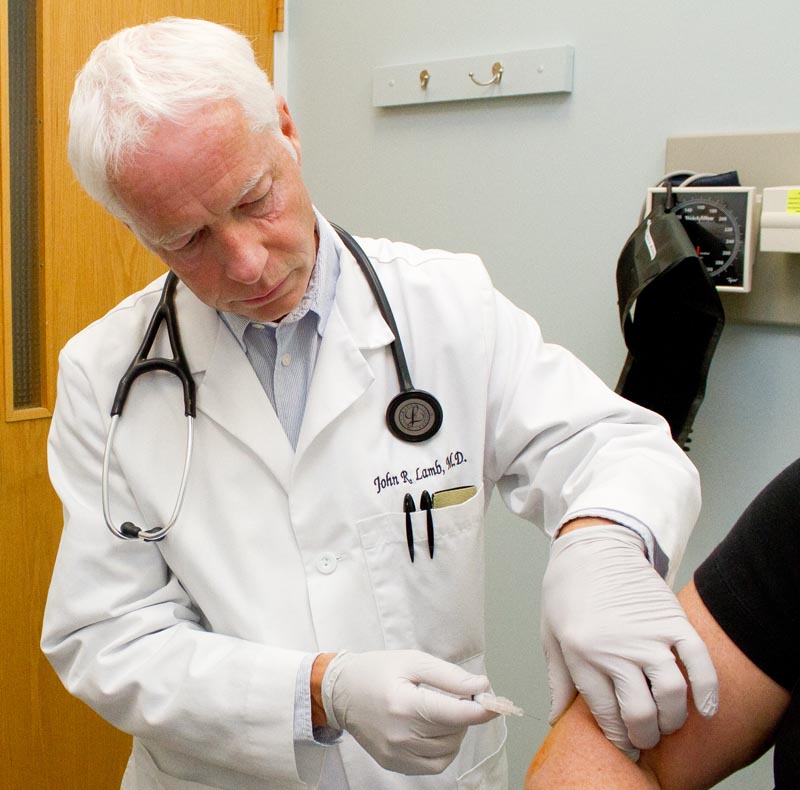





Comments
Comment policy »